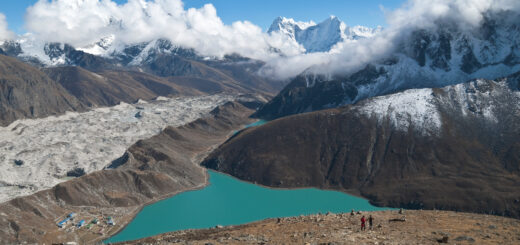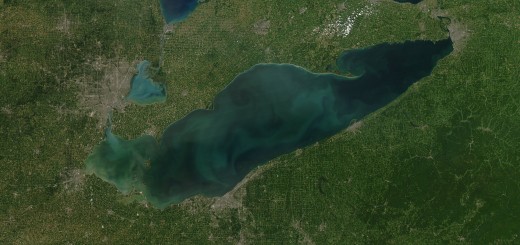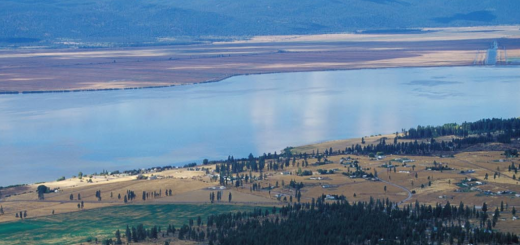Research Summary: Recognizing Cross-Ecosystem Responses To Changing Temperatures: Soil Warming Impacts Pelagic Food Webs
01Department of Biological Sciences, Dartmouth College, Hanover, NH 03755
2Present address: Department of Ecology and Evolutionary Biology, Yale University, New Haven, CT 06520
3Departments of Civil and Environmental Engineering and Bacteriology, University of Wisconsin, Madison, Wisconsin 53706
The export of nutrients, detritus, and living organisms from marine, terrestrial, and freshwater ecosystems can critically shape food web structure, food web stability, and ecosystem functioning in the recipient ecosystem (Polis et al. 1997, Gratton et al. 2008, Takimoto et al. 2002). Despite the acknowledged importance of subsidies and the potential for both organisms and detritus to be affected by temperature (Kovach et al. 2013), little information is available regarding how temperature could alter the quality of ecological subsidies or the response of the recipient system to such alterations (Greig et al. 2012). This paucity of information reflects a general lack of integrative research across ecosystems and hinders current predictions of the ecological consequences of climate change (Woodward et al. 2010).

Figure 1. Deciduous trees line the shore of Lake Sunapee, New Hampshire (left) and subsequently fall into aquatic ecosystems (right). (Credit: E. Traver)
Leaves from deciduous terrestrial vegetation (Figure 1) provide an ideal opportunity for investigating how changes in temperature might alter ecological subsidies due to their importance for aquatic ecosystems (France and Peters 1995) and sensitivity to local environmental conditions (Melillo et al. 2011). The dissolved organic carbon (DOC), nitrogen (N) and phosphorus (P) leached from leaves can stimulate both detritivore-based “brown” food webs, including bacteria and their consumers (Lennon and Pfaff 2005), and producer-based “green” food webs, including phytoplankton (Figure 2). Additionally, the biogeochemical and physiological processes that allow leaves to become important subsidies for lakes and ponds also create the potential for local environmental conditions to alter the quality of these subsidies (Butler et al. 2012, Sardans and Peñuelas 2012). As such, we hypothesized that variation in leaf chemistry driven by increased soil temperature would alter the quality of leaf subsidies for freshwater pond pelagic food webs.

Figure 2. Leaves affect aquatic ecosystems by increasing the availability of nutrients and carbon for biological uptake and transfer through the food web (solid blue arrows) and by reducing light availability (dashed brown arrows). (Credit: K Curtis-Hill)
Method
We collected red maple (Acer rubrum) leaves from heated and ambient temperature plots from the long-term soil warming experiment at the Harvard Experimental Forest. We then added leaves to 167 L field mesocosms containing established plankton communities (containing bacteria, phytoplankton, and zooplankton assemblages), creating “no leaf”, “ambient leaf” and “heated leaf” treatments. We monitored physical, chemical, and biological responses prior to and following the imposition of treatments until the mesocosms froze 6 weeks later. This experiment was conducted in Hanover, NH, USA in autumn 2012.

Figure 3. Physical and chemical responses to leaf additions. Arrows indicate the date that leaves were added to experimental mesocosms from either an ambient soil temperature forest or a heated forest; no leaves were added to control mesocosms. Open symbols in (c) are DOC concentrations, which overlap on 10/02. Data are treatment means +/- SE. (Credit: Samuel Fey)
Results
Experimental soil warming altered the chemical composition of deciduous leaves, the physical and chemical environment of the aquatic ecosystems to which leaves were added, and the pelagic pond food webs as measured by community composition. Compared to leaves from ambient-temperature soils, leaves from warmed soils had two fold lower foliar phosphorus concentrations. Leaf additions to mesocosms initially resulted in lower water column phosphorus and dissolved organic carbon (Figure 3), which reduced bacterial densities. However, the diminished carbon and phosphorus resulting from soil warming also increased light availability that ultimately stimulated cladoceran zooplankton relative to ambient-temperature leaves (Figure 4).
Conclusions
This experiment demonstrates that variation in soil temperature is capable of impacting pelagic pond food webs during the period of autumn leaf drop by altering the quality of leaf subsidies. The response of different components of the pond food webs to leaves grown under different environmental conditions was unexpectedly complex, with leaves from experimentally warmed soils ultimately producing lower bacterial densities but higher cladoceran zooplankton densities relative to leaves from unwarmed soils. As such the potential for terrestrial temperatures to indirectly affect pond ecosystems by altering cross-ecosystem leaf subsidies may be an important and underappreciated ecological process. More generally, our results suggest that accurately predicting the potential consequences of climate change will require conducting research across ecosystem boundaries.

Figure 4. Biological responses to leaf additions. Arrows and symbols are consistent with Figure 3. (Credit: Samuel Fey)
Full study published in Oikos’ Synthesising Ecology, Feb. 25, 2015.
References
- Butler, S.M. et al. 2012. Soil warming alters nitrogen cycling in a New England forest: implications for ecosystem function and structure. – Oecologia 168: 819-828.
- France, R. and Peters, R. 1995. Predictive model of the effects on lake metabolism of decreased airborne litterfall through riparian deforestation. – Conserv. Biol. 9: 1578-1586.
- Gratton, C. et al. 2008. Ecosystem linkages between lakes and the surrounding terrestrial landscape in Northeast Iceland. – Ecosystems 11: 764-774.
- Greig, H.S. et al. 2012. Warming, eutrophication, and predator loss amplify subsidies between aquatic and terrestrial ecosystems. – Glob. Change Bio 18: 504-514.
- Kovach, R.P. et al. 2013. Earlier migration timing, decreasing phenotypic variation, and biocomplexity in multiple salmonid species. – PLOS ONE 8: e53807.
- Lennon, J. and Pfaff, L. 2005. Source and supply of terrestrial organic matter affects aquatic microbial metabolism. – Aquat. Microb. Ecol. 39: 107-119.
- Melillo, J.M. et al. 2011. Soil warming, carbon–nitrogen interactions, and forest carbon budgets. – Proc. Natl. Acad. Sci. U.S.A. 108: 9508-9512.
- Polis, G. et al. 1997. Toward an integration of landscape and food web ecology: The dynamics of spatially subsidized food webs. – Annu. Rev. Ecol. Syst. 28: 289-316.
- Sardans, J. and Peñuelas, J. 2012. The role of plants in the effects of global change on nutrient availability and stoichiometry in the plant-soil system. – Plant Physiology 160: 1741-1761.
- Takimoto, G. et al. 2002. Seasonal subsidy stabilizes food web dynamics: Balance in a heterogeneous landscape. – Ecol. Res. 17: 433-439.
- Woodward, G. et al. 2010. Climate change and freshwater ecosystems: impacts across multiple levels of organization. – Phil.Trans. R. Soc. B. 365: 2093-2106.
Featured Image: Lake Sunapee. (Credit: Flickr User Rick Kloeppel via Creative Commons 2.0)













